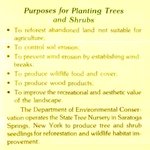Gr8tfuldad
Chumono
Hello All. I live right outside IBSP area, Seaside or Jersey Shore. I drive through Seaside everyday on my way to Bayhead to work. I want to collect JBP seeds this fall as they are everywhere in the area. I have searched for seed collecting and found little information. What does a mature cone that will yield seeds look like? Any information I have found says Sep-October is the best time. How do you remove the seeds from the cones? Thank you for any information that will make my collecting efforts more fruitful.





